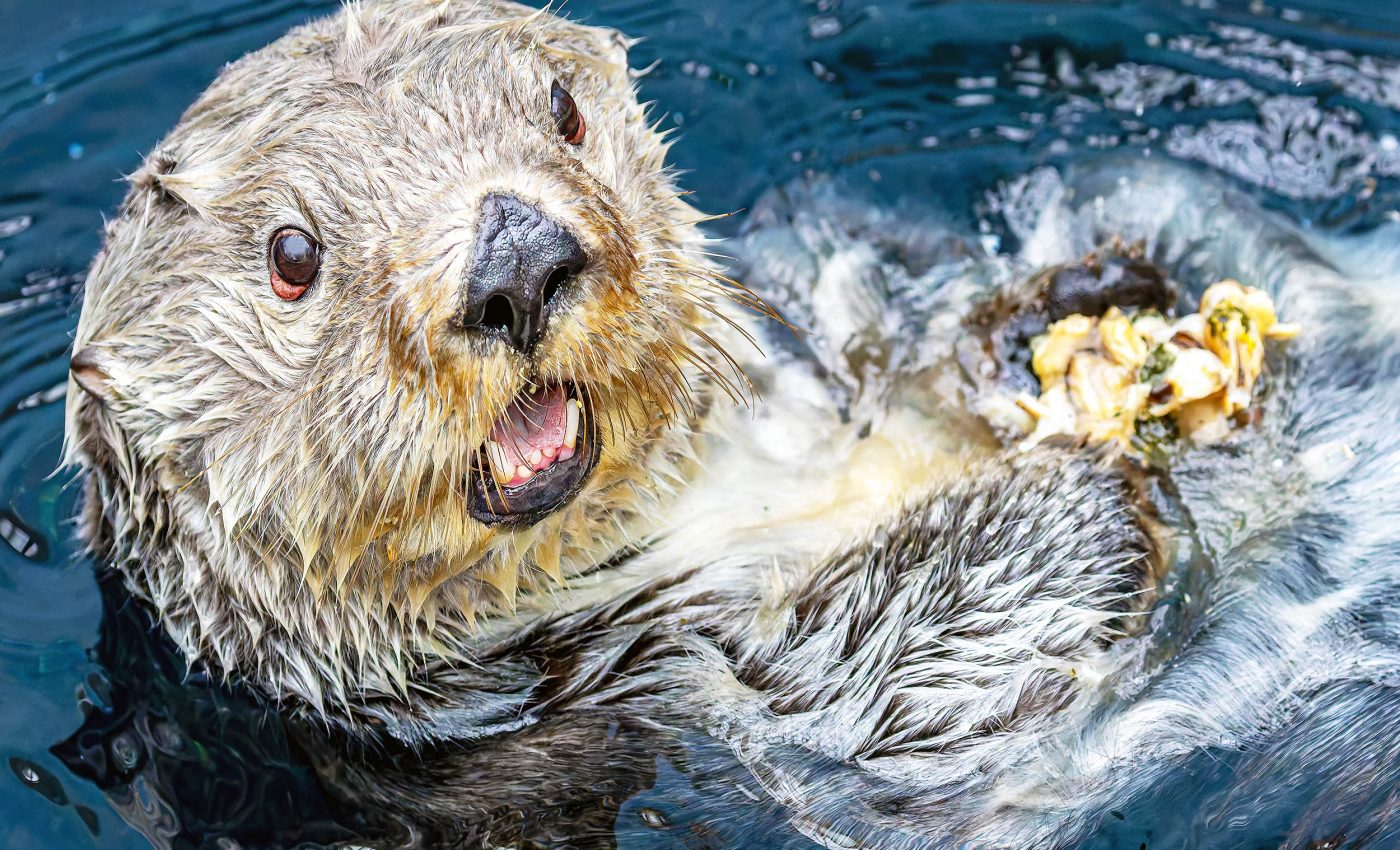
Sea otter populations thrive when sea stars vanish from an area, but why?
When ochre sea stars began dissolving along the Pacific coast in 2013, marine biologists feared a domino effect in the rocky intertidal zone. The orange-and-purple Pisaster ochraceus is a classic “keystone” predator – remove it, and the tightly knit ecological web can unravel.
What no one predicted was that the die-off would reverberate far beyond the tide pools, ultimately reshaping the menu – and the numbers – of sea otters hunting in adjacent kelp forests.
Falling sea stars and rising mussels
Sea-star wasting syndrome swept from Alaska to Baja California with unprecedented speed, leaving many local Pisaster populations functionally extinct in a matter of months.
On the Monterey Peninsula, field teams led by the Multi-Agency Rocky Intertidal Network (MARINe) watched decades-old monitoring plots lose nearly every visible star by late 2013.
Without those relentless predators to keep them in check, California mussels began carpeting the rocks. Within three years, mussel cover tripled, climbing from roughly five percent of available surface to more than eighteen percent.
Fewer sea stars, more otters
That population explosion did not go unnoticed by the region’s most charismatic marine mammal. Monterey Bay Aquarium scientists had already logged tens of thousands of hours observing southern sea otters as they surfaced with prey.
Before 2013, mussels represented a minor side dish – less than seven percent of the typical otter diet. By 2016, the proportion had leapt to nearly eighteen percent, effectively pushing mussels into staple territory.
“Our research shows that the loss of a predator in one ecosystem can send shockwaves into another,” said lead author Joshua Smith, a research scientist at Monterey Bay Aquarium.
Mussel abundance appears to have acted like an all-you-can-eat buffet. The local otter census, which had hovered around 373 animals through 2012, rose to an average of 535 between 2014 and 2024.
Because otters consume prey at the surface, scientists could verify that many of those extra calories were coming directly from the burgeoning mussel beds.
Linking tide pools and kelp forests
The experts coined the term “keystone interdependence” to describe the phenomenon: the fate of a key predator in one habitat alters food webs – and potentially population dynamics – in an adjoining habitat. In this case, a tide pool predator’s collapse reshaped the foraging landscape of a kelp forest hunter.
“It’s an example of how ecosystems are connected through keystone predation in ways that we haven’t understood before,” Smith noted. Long-term MARINe records were crucial for pinning down that connection.

Four intertidal sites around the peninsula have been surveyed regularly for decades, yielding counts of Pisaster, estimates of mussel coverage, and precise measurements of bed expansion toward the sea.
When those data were matched with the aquarium’s otter-foraging database, the correlation between star loss, mussel gain, and otter diet shift became unmistakable.
Short-lived reward for otters
While the loss of sea stars- and subsequent mussel windfall – has helped otters, researchers caution that the benefit may be short-lived.
With no predators to prune them, mussels are now reaching sizes that recovering sea stars cannot easily handle.
Even if sea stars populations rebound, it may take years for size structures – and the prior equilibrium – to return. Scientists suspect the otters will eventually pivot again, either as mussels dwindle or as other prey become more profitable.
Climate variability complicates the forecast. The sea-star collapse overlapped with the northeast Pacific’s record-breaking 2014-2016 marine heatwave.
Warmer water stressed kelp forests, sea-urchin numbers exploded, and otters temporarily targeted urchins to protect their kelp refuge.
Once the mussel bonanza emerged, the mammals switched menus again, underscoring their role as flexible generalists in a rapidly changing ocean.
Predators and resilient ecosystems
“Predators like sea stars and sea otters are essential to maintaining resilient ecosystems. When these predators are removed, everything crumbles,” Smith said.
Study co-author April Ridlon, director of U.S. and California science at the aquarium, noted that the findings challenge conventional single-habitat conservation planning.
“The findings of this study show that predators are important for enabling ecological resilience, and that when predators decline in one ecosystem, the consequences may be manifest in another,” she explained.
Senior sea otter biologist Leilani Konrad added that protecting predators in one realm can inadvertently bolster resilience in the next.
“Our findings of keystone interdependence reveal that conservation of predators in one ecosystem can enhance resilience that transcends ecosystems and protects biodiversity,” said Konrad.
Fragile ecosystems with missing links
As marine heatwaves and disease outbreaks become more frequent under climate change, scientists expect further surprises in how coastal food webs respond.
The Monterey Bay team is now using drone surveys, time-series photography, and genetic tools to track whether young sea stars can gain a foothold amid shells too large to crack.
The researchers are also watching for the day when otters – having trimmed the largest mussels – adjust their diet yet again, perhaps returning their focus to urchins if kelp forests rebound.
For now, the study offers a rare silver lining: one group’s misfortune has provided temporary relief to another threatened species.
Yet it also sounds a cautionary note about the fragility of such balances. The intertwined stories of stars, mussels, and otters illustrate that in nature, no ecosystem stands alone – and that losing a single link can tug on threads stretching far beyond our initial field of view.
The study is published in the journal Science Advances.
—–
Like what you read? Subscribe to our newsletter for engaging articles, exclusive content, and the latest updates.
Check us out on EarthSnap, a free app brought to you by Eric Ralls and Earth.com.
—–













